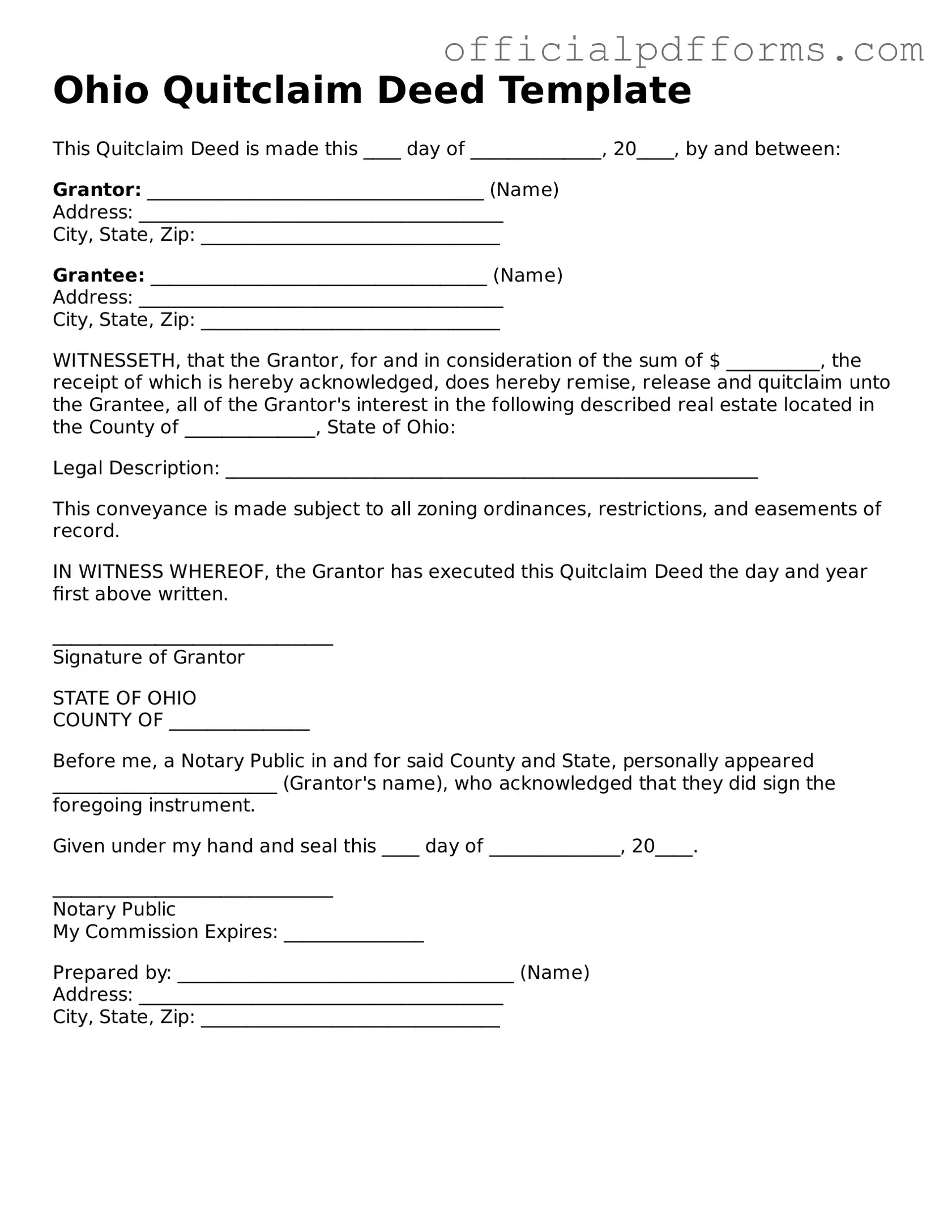What is a Quitclaim Deed in Ohio?
A Quitclaim Deed is a legal document used to transfer ownership of real estate from one party to another. In Ohio, this type of deed is often used when the property is being transferred between family members, during divorce settlements, or in situations where the grantor does not wish to make any warranties about the title. Unlike a warranty deed, a quitclaim deed does not guarantee that the grantor holds clear title to the property, meaning there may be existing claims or liens against it.
How do I complete an Ohio Quitclaim Deed?
To complete a Quitclaim Deed in Ohio, follow these steps:
-
Obtain the form: You can find a Quitclaim Deed form at local county recorder offices or online legal resources.
-
Fill in the necessary information: This includes the names of the grantor (the person transferring the property) and the grantee (the person receiving the property), a legal description of the property, and any relevant addresses.
-
Sign the document: The grantor must sign the deed in the presence of a notary public. This step is crucial as it verifies the identity of the signer.
-
File the deed: Once completed and notarized, the Quitclaim Deed should be filed with the county recorder's office where the property is located. There may be a small fee for recording.
Is a Quitclaim Deed the same as a Warranty Deed?
No, a Quitclaim Deed is not the same as a Warranty Deed. While both documents transfer ownership of property, a Warranty Deed provides a guarantee that the grantor holds clear title and has the right to sell the property. In contrast, a Quitclaim Deed offers no such assurances. This makes Quitclaim Deeds riskier for the grantee, as they may inherit any existing issues with the property title.
Can I use a Quitclaim Deed to transfer property to myself?
Yes, you can use a Quitclaim Deed to transfer property to yourself. This might be done for various reasons, such as changing the way the title is held (for example, from individual ownership to joint ownership with a spouse). However, consider consulting a legal professional to ensure that the transfer is done correctly and to understand any potential implications.
Are there any tax implications when using a Quitclaim Deed?
Generally, transferring property through a Quitclaim Deed may not trigger immediate tax consequences. However, it is important to consider potential gift tax implications if the property is transferred without receiving adequate compensation. Additionally, property taxes may be reassessed based on the new ownership. Consulting a tax professional can provide clarity on any specific tax obligations associated with your situation.
Can I revoke a Quitclaim Deed after it has been executed?
Once a Quitclaim Deed has been executed and recorded, it cannot be unilaterally revoked. However, the grantor and grantee can agree to execute a new deed that reverses the transfer or creates a different arrangement. It's advisable to consult with a legal professional to understand the best course of action if you wish to change the ownership status.
You can find an Ohio Quitclaim Deed form in several places:
-
Online legal resources that provide templates and forms.
-
Your local county recorder's office, which may have forms available for public use.
-
Legal stationery stores that sell various property-related forms.
Always ensure that the form you use complies with Ohio state laws and includes all necessary information.
